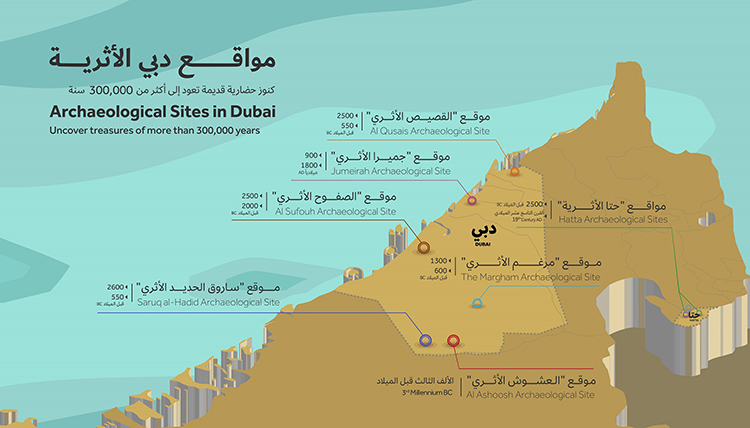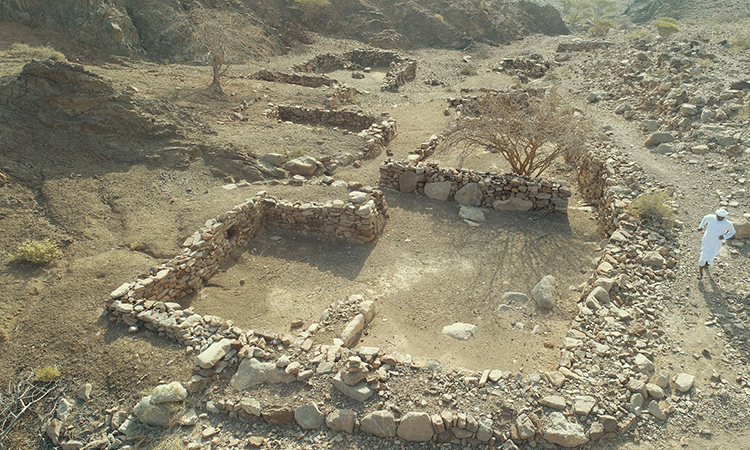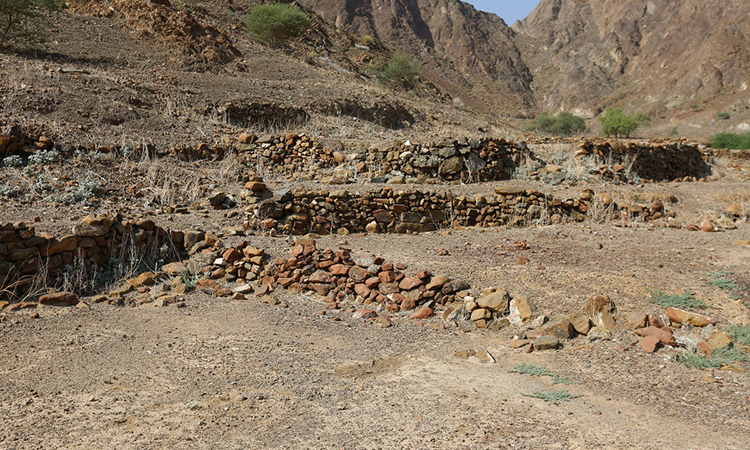Dubai is showcasing its rich history through the unveiling of more than 17 significant archaeological sites, reflecting the emirate’s deep cultural and historical roots. These sites, discovered over many years of archaeological surveys, include Saruq al-Hadid, Al Sufouh, Jumeirah, and Al Ashoush, revealing a continuous human presence in the region for over 300,000 years. From the Lower Palaeolithic (1,500,000-300,000 BC) to the Neolithic period (8000-4000 BC), and extending to the late Islamic eras (19th century AD), these sites offer invaluable insights into Dubai's past and its connections with the broader Near East.
Jumeirah1. The Islamic Era Jumeirah Archaeological Site, which dates back to the Abbasid Caliphate era, includes the remains of an ancient Islamic city reflecting the prosperity of Islamic civilisation during the 10th century.
Managed by the Dubai Culture and Arts Authority (Dubai Culture), these archaeological treasures serve as a testament to the region’s intricate cultural tapestry. They provide vital knowledge for researchers and the public, playing a crucial role in preserving Dubai's archaeological heritage. Dubai Culture is dedicated to protecting these sites and ensuring their accessibility, thereby educating and inspiring future generations about the emirate's historical significance and cultural depth.
Sheikh Mohammed's Discovery
A highlight among these sites is the Saruq al-Hadid Archaeological Site (2600-550 BC), discovered in 2002 by His Highness Sheikh Mohammed Bin Rashid Al Maktoum, Vice President and Prime Minister of the UAE, and Ruler of Dubai. This site, a significant center for Iron Age metal smelting, has yielded numerous rare artifacts, including bronze, pottery, and stone vessels, weapons, and decorative items. The discovery underscores the region's rich history and cultural significance.
The Suhaila Archaeological Sites contain several different villages sharing similar architectural elements.
Islamic Era Jumeirah Archaeological Site
The Jumeirah Archaeological Site (900-1800 AD), discovered in 1969, dates back to the Abbasid Caliphate era. It includes the remnants of an ancient Islamic city, featuring 12 buildings—nine residential, a caravanserai, a mosque, and a market—characterized by Islamic architecture and intricate geometric and floral gypsum decorations. This site illustrates Jumeirah's role as a major commercial hub connecting Oman, the Arabian Peninsula, Mesopotamia, and the Far East.
Al Sufouh and Al Ashoush
Discovered in 1988, the Al Sufouh Archaeological Site (2500-2000 BC) contains remains from the third millennium BC, including earth-cut tombs from the Umm Al-Nar civilization. Excavations revealed a circular tomb with skeletal remains, copper weapons, and various artifacts.
The Al Ashoush Archaeological Site, dating back to the third millennium BC, represents early human settlements in Dubai's inland desert, away from the Arabian Gulf coast.
Wadi Jima Site
Other Significant Sites
The Al Qusais Archaeological Site (2500-550 BC) features a large Bronze and Iron Age settlement with a cemetery containing about 120 individuals and various artifacts. The Margham Archaeological Site (1300-600 BC), discovered recently, includes a semi-circular tomb with a skeleton and several funerary gifts.
In Hatta, the Jabal Al Yamh Tombs (2500-1300 BC) comprise 84 tombs from various historical periods, with numerous artifacts providing significant historical insights. The Wadi Jima Site features an Islamic agricultural village from the late Islamic Era, showcasing residential buildings and complex irrigation systems.
Preservation and Cultural Tourism
Dubai Culture aims to conserve these archaeological sites and highlight their cultural and historical importance. Through restoration projects and initiatives, the authority is enhancing sustainable cultural tourism and fostering scientific research at both local and international levels. The Supreme Committee to Oversee the Development of Hatta is actively involved in preserving the area's archaeological heritage, ensuring these historical assets are prepared to welcome visitors.
By safeguarding these sites, Dubai Culture ensures that the emirate's rich history continues to educate and inspire, reinforcing Dubai's position on the global heritage map.










